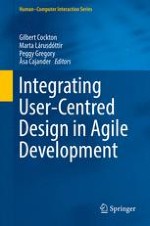2016 | OriginalPaper | Chapter
10. Challenges from Integrating Usability Activities in Scrum: Why Is Scrum so Fashionable?
Authors : Marta Lárusdóttir, Åsa Cajander, Gudbjörg Erlingsdottir, Thomas Lind, Jan Gulliksen
Published in: Integrating User-Centred Design in Agile Development
Publisher: Springer International Publishing
Activate our intelligent search to find suitable subject content or patents.
Select sections of text to find matching patents with Artificial Intelligence. powered by
Select sections of text to find additional relevant content using AI-assisted search. powered by
